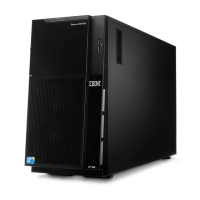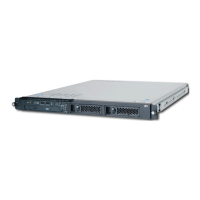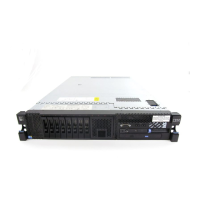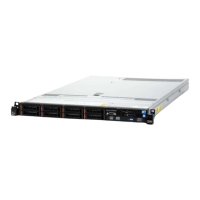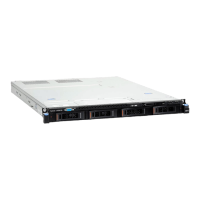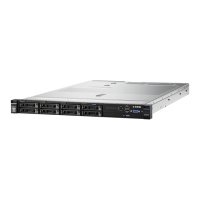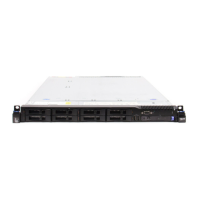v The server supports industry-standard double-data-rate 3 (DDR3), 800, 1066, or
1333 MHz, PC3-10600R-999 (single-, dual-, or quad-rank), registered,
synchronous dynamic random-access memory (SDRAM) dual inline memory
modules (DIMMs) with error correcting code (ECC). See http://www.ibm.com/
servers/eserver/serverproven/compat/us/ for a list of supported memory modules
for the server.
v At least one DIMM must be installed for each installed microprocessor for the
server to operate, but three DIMMs per microprocessor improves server
performance.
v When two microprocessors are installed in the server, distribute the DIMMs
between the two microprocessors to improve server performance.
v The server supports a maximum of 16 single-, dual-, or quad-rank DIMMs. The
maximum number of quad-rank DIMMs the server supports is 12.
v The memory controller has three registered DIMM channels per microprocessor
(channels 0, 1, and 2). Channels 0 and 1 support three DIMMS, and channel 2
supports two DIMMs.
v Install DIMMs starting with the connector farthest from the microprocessor within
each channel.
v When you install a quad-ranked DIMM in a channel with single- or dual-ranked
DIMMs, install the quad-ranked DIMM in the connector farthest from the
microprocessor.
v The server supports 1 GB, 2 GB, and 4 GB DIMMs, with a minimum of 2 GB and
a maximum of 64 GB of system memory. (When 8 GB DIMMS are available, the
maximum supported system memory will be 128 GB.)
For 32-bit operating systems only: Some memory is reserved for various
system resources and is unavailable to the operating system. The amount of
memory that is reserved for system resources depends on the operating system,
the configuration of the server, and the configured PCI devices.
62 IBM System x3500 M2 Type 7839: Installation and User’s Guide
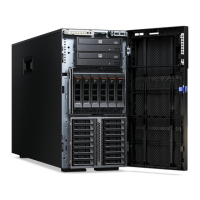
